“Not a single break”: what is the cost of making an online broadcast that will not fall, slow down and cause pain in the eyes?
If someone follows our blog, they probably already know that we are holding hardcore technical conferences in various areas of programming (Java, .NET, HolyJS, iOS / Android, testing). These conferences are traditionally held in Moscow and St. Petersburg, why? Because in these cities there are physically more developers - this allows you to collect 500-1000 like-minded people under one roof.
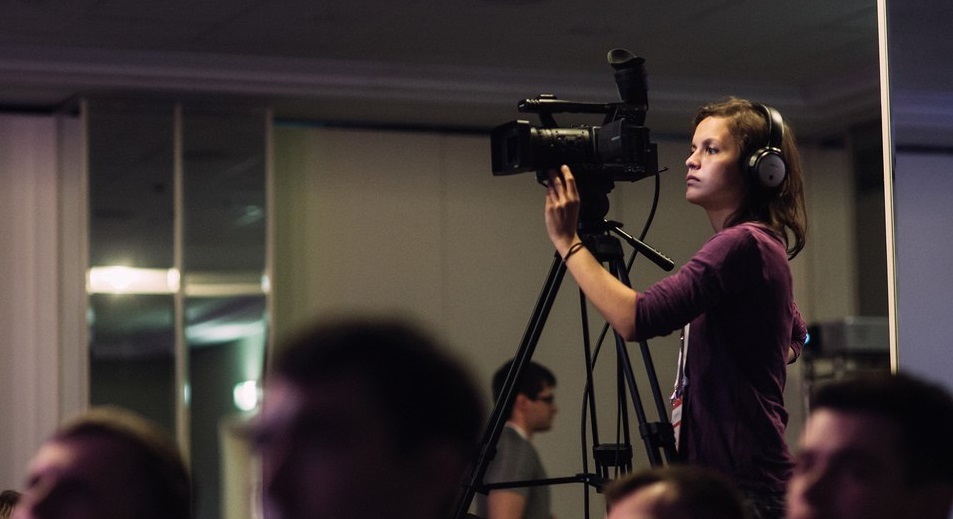
However, we know and understand that there are many developers in other cities of Russia who are ready to join the community, who are looking for new technologies and approaches, but it is simply unrealistic for them to get to the capitals - for such people we make online broadcasts of our conferences.
')
What is the ideal broadcast in our opinion? Here are some links to the latest news broadcasts of the latest conferences:

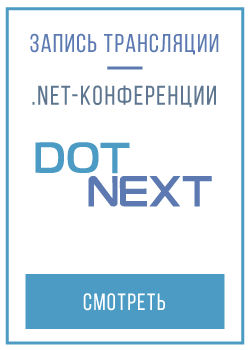


And if you're wondering what it cost us to hone the broadcast and video to such a state, as well as what packs with a real-time system cause the strongest battleheart, read under the cut.
Probably, everyone saw more than one broadcast of various conferences, seminars, schools and other things. Usually everything is simple: a video camera is taken, the speaker stands in sight, behind the back is a screen with slides from the projector. Some organizers go further and at the bottom of the broadcast window attach pdf-files of presentations - you can clarify and trace what is not visible from the screen. The more advanced ones remove the slides from the speaker’s laptop, but at the same time the picture is placed in the corner and at one point in time either the slides or the speaker are visible (you can see something like this with the Skype screen). None of these options, we, the organizers of Joker, did not suit. We do what seems logical, convenient and enjoyable to watch. And we see the general unreadiness of the industry to do what we want.
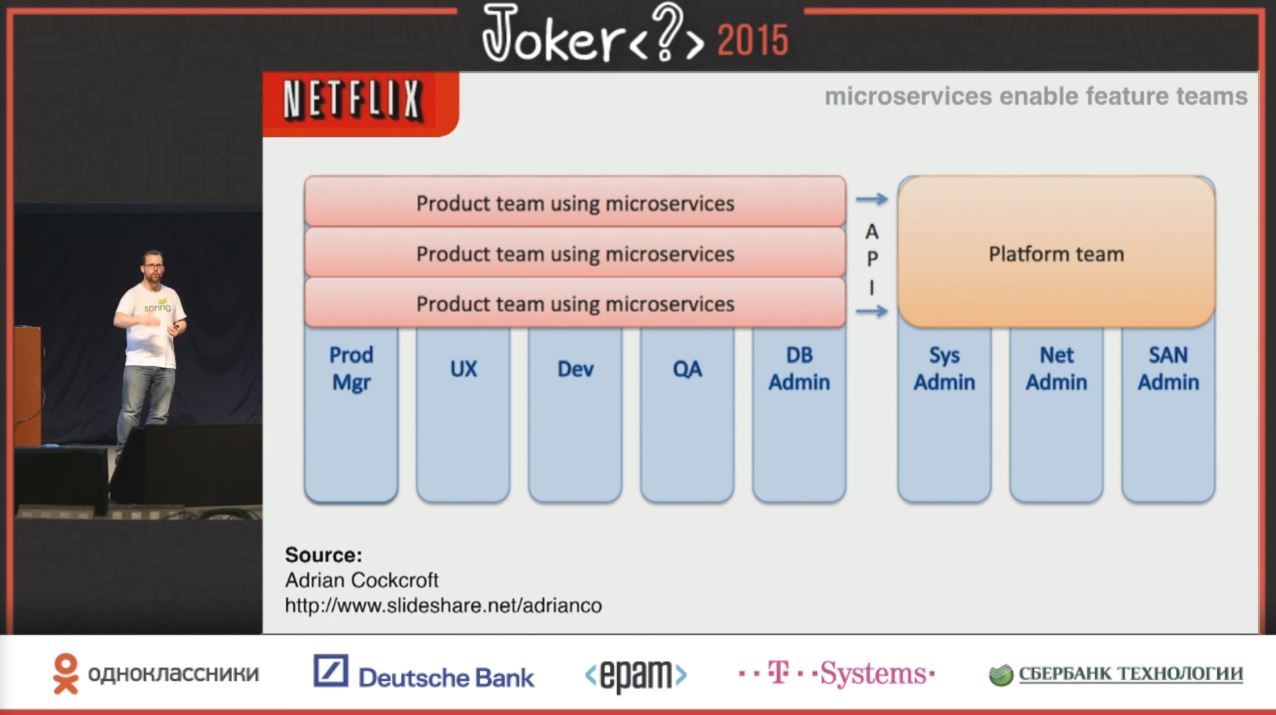
Live broadcast for us is always an interesting story. In fact, in order to simply upload a picture on the Internet, you can use YouTube - all you need is three things: a computer, an Internet channel and a connection to the camera. But to superimpose a picture with a speaker on his slides from a laptop or to show in high quality how he programs in person is not at all a trivial task. First of all, the video must be mounted, as they say, on the fly. That is, usually the installation is done: sound, video from a pair of cameras, slides to reports are assembled, and all this is slowly and carefully assembled with the help of specialized software. This is all done after recording. We need to create everything in real time. To do this, there are special programs that allow you not only to edit the video on the fly, but also, which is very important, to broadcast it in a different quality. For example, if you are watching an online broadcast from a tablet with a native resolution of 800 points, it will not pull 1920 points in width, and if you do this in a cafe with a public channel, you will not pull the Internet either. Therefore, the quality should be one. Another story, if you watch a ten-person broadcast on a 60-inch plasma. That is why the video mounted on the fly and you have to instantly cut and give in different quality. We record in the highest quality, and then pinch it on the fly - usually the delay is no more than 5-10 seconds.
Internet speed is another big pain. Alas, you won’t bring your internet with you, you have to use the one on the conference venue. And the sites are different. For example, there was a case when on the site guest access to the network was tuned to the same channel where the online broadcast took place. The people came to the conference, everyone connected to wi-fi, the speed of transmission of the broadcast dropped. Worse, we didn’t notice it right away, since the delay can be up to 15 seconds and smoothing occurs here. It also happens that the conference is held in hotels where the main hall for 600 people and small rooms for a total of 400. At the same time, the hotel offers wi-fi for 300 people. Here problems with the Internet are inevitable. Think for yourself: FullHD video eats 5 Mbit / s per room, and taking into account the technological reserve - 10-15 Mbit / s, in addition, some contractors are trying to cut the video into different quality on site, and this is 15-20 Mbit / s . Hotels have no such channels. Wireless technologies do not keep such speed, unreliable.

The server on which the video is mounted is located right on the site and it does not distribute the broadcast itself, but uploads the video to a remote server, which does this. Accordingly, when you use your server, it should be able to keep a high load, which is growing just at the moment when the video from the car on the site is poured onto the remote one. In case of a drawdown of the connection speed, you can have time to fill in the previous and next seconds of the performance. But if the Internet disappears completely, the broadcast will be interrupted.
By the way, ahead of your questions about YouTube, we used this broadcasting model. And faced with a few critical limitations. For example, the broadcast was closed in some countries - we received complaints from children from Germany (the conference was held in Moscow), saved the use of proxies through Russia. Again, broadcasting via YouTube seemed convenient - there was no need for a server, but the service does not keep an online broadcast lasting more than 8 hours, and our conference lasted a little longer. It was necessary to change the links to online at lunchtime, someone was lost, did not reload the page, sometimes they did not have time to set up all the rooms, there were delays.
A very delicate moment - shooting the speaker. Especially if there are demos and live-coding in the report - we have exactly one chance to remove all the information. This is especially important if the speaker is from another city or another country - you will not ask him to repeat it again. The system that provides this shooting is quite fragile. Broadcasting is done for 20% of the conference participants, 80% are on the site itself: you need to ensure a good picture of all. It happens that during the explanation the speakers turn to the screen with the slide face, and to the hall - their backs and so continue to speak. To solve this trouble, a prompter is provided - a screen under the speaker’s feet: it’s enough for the speaker to squint down and a slide is visible.
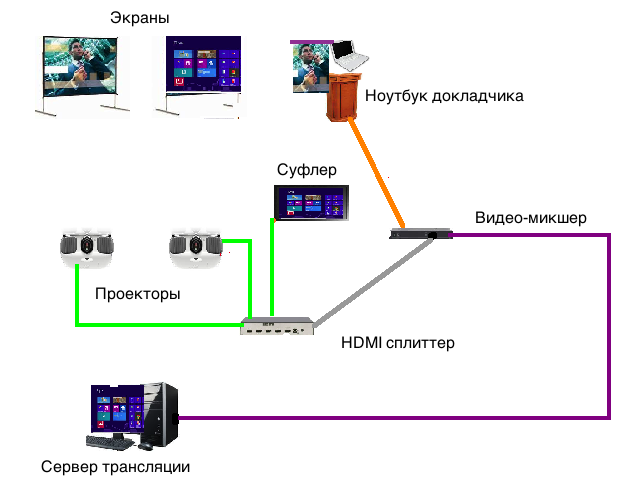
Thus, it is necessary to provide broadcasting to the projector, broadcast, and sometimes also to the screens for the back rows and the speaker’s prompter. This circuit consistently includes many instruments, each of which can fail. Then problems will arise: the slides will disappear, the live code will disappear. And this is absolutely
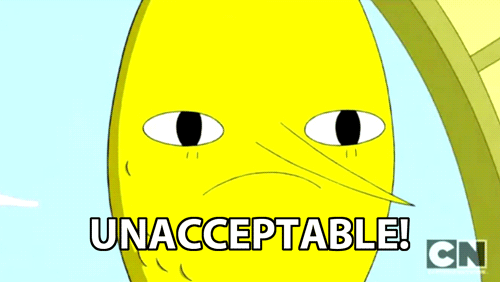
It is also important to pay attention to the lighting - when video filming is one of the key points - there are no simple solutions either. First of all, you just want to highlight the speaker with a searchlight, but then the screen with slides is highlighted, and if you dim the light, the screen is perfectly visible, but the speaker is not visible. Modern technologies of television video recording are interlaced and, in case of unsuccessful lighting due to the delay between frames, the speaker moves jerky like a robot. The simplest option is to hang up additional lighting, but the lamps can blind the speaker and he will not be able to look into the hall (and in general, it is difficult to give a technical report when a pair of projectors hit your eyes). In addition, the searchlight snatches a person on the stage with a rather narrow light spot, and the speaker can walk around the stage. To control the shooting of a person in motion, you need an additional light guide who will control the direction of lighting: if you drive the camera parallel to the speaker’s movement, your eyes hurt and your head is spinning if you watch the video, if it runs smoothly, it runs away from the frame. Here the exit is technically simple, but strong-willed - to ask the speaker to move less around the stage.
In addition to the video you need to write more and sound. Again, this is not so easy. Sources of sound in the hall: the speaker, the tracker (presenter of the hall), the audience with questions. All these voices need to be reduced to one sound console and output to the speakers and to the broadcast. Here again can deny anything. And if in case of microphone failure in the hall, you can finish speaking with a loud voice, then the broadcast takes the sound from the console and in the event of a failure, you cannot hear anything. It so happens that the viewer asks a question without waiting for the microphone - the sound controller does not write it. But some questions are very valuable and precisely complement the report, help clarify the topic or the details that the rapporteur omitted for some reason. We are sending a sound cannon (a remote microphone) to such a voice - and that voice already hits the sound console, from where it is being broadcast.
 Even elementary batteries are important! You will laugh, but in our check-list it is written who, when buying them, changes and checks that the sound is guaranteed to come from the microphones. Well, for security, each speaker has a digital voice recorder that is not tied to the console. Thanks to him, in the event of a total microphone mute, there will always be an audio track that falls into the final assembly of the conference materials.
Even elementary batteries are important! You will laugh, but in our check-list it is written who, when buying them, changes and checks that the sound is guaranteed to come from the microphones. Well, for security, each speaker has a digital voice recorder that is not tied to the console. Thanks to him, in the event of a total microphone mute, there will always be an audio track that falls into the final assembly of the conference materials.
Another difficulty is the tight deadlines for the conference. In 2016, Joker will be held for two busy, dense days. During this time, we need to give maximum information, and we compress all that can be compressed: for example, the intervals between reports. Which, by the way, can be captured by questions to the next expert. It happens that the break is reduced to three minutes, but for us this is the moment of equipment reconfiguration: you need to connect the following laptop (everyone has different PCs with different operating systems: macOS, Windows, Linux, which work differently with the video output), a microphone. Any delay cascading entails delays and other activities, so we can configure and in three minutes. We established the friendship of laptops with equipment at the site as follows: the speaker sees a bunch of different types of cables (HDMI, VGA, Displayport and God knows what) connects one that supports his device, and then a special device converts the image.
The complexity of the settings associated with the multiplicity of the conference. One set of equipment should be able to fantastically a lot, work on the hall and on the broadcast. This is a very complex overall picture. But our system is debugged and works on the fly. If we expect some kind of a jamb or a failure, then by all means we lay a straw. Of course, if the Internet cable cuts through the excavator on the street or in the whole area, the electricity is cut, it is already difficult to do something. As for the rest, we have already tested the broadcast of this year in different qualities, everything works.
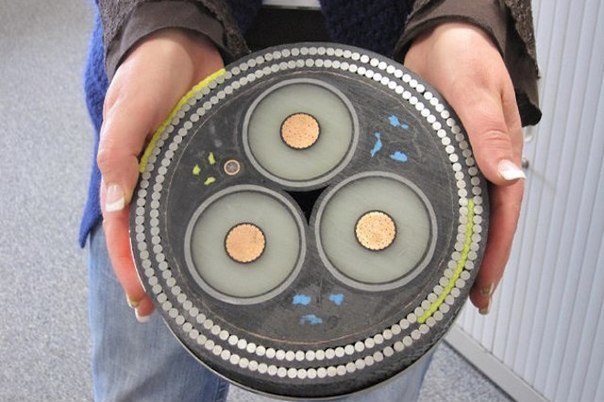
Sometimes it seems that the ideal has almost been reached: here is our FullHD broadcast almost without delay and artifacts with sound pouring out of hundreds of monitors - there is a great temptation to exclaim in Faust, “Stop, instant.” But this is a road to nowhere, so in October at Joker 2016 we are preparing several features that will make the broadcast more interactive:
Previously, we used Twitter to catch bugs and glitches - this allowed us to correct mistakes in up to 3-5 minutes, this time there will be a chat in each track, where participants can not only write about errors, but also discuss reports. As long as there is a nuance - asking the speaker in real time will not work yet, the speaker will see all the comments only after his speech - however, here we come to the next thing, which will allow you to get the necessary answers.
According to the results of the report and discussion in the discussion area, the speaker will give interviews during the conference breaks - this means that we will almost completely say goodbye to “Wait, Now Begin” plugs and the audience will have non-stop broadcasting.
In fact, this is such an exclusive for those who follow the broadcast, because these interviews are not seen at the conference. In addition, the speaker will be able to answer questions that you ask in the chat, and if you ignite the holivar and the enthusiasm of the speaker, then you can see the announcements of Habropost.Let it be srach in the comments!
In addition to the speakers, in the breaks of the interview partners and sponsors of the conference will give. Why is this necessary? Often, sponsors do not just promote their companies (after all, this is not very interesting), but prepare various interactive interviews - “quick-thinking” tasks, share interesting case studies and live hacks, and also tell insider information about the most interesting projects that are being prepared in the depths of their offices.
For example, EPAM encourages computer science and research, and did Deutsche Bank send employees to London last year? This can only be heard firsthand, now in our online broadcast!
And “for dessert”: broadcast of the first day's party, with a break during which you can have time todrive for a beer to brew a cup of tea, so that in LIVE mode you can enjoy the sound of Sonic Pi by Sam Aaron.
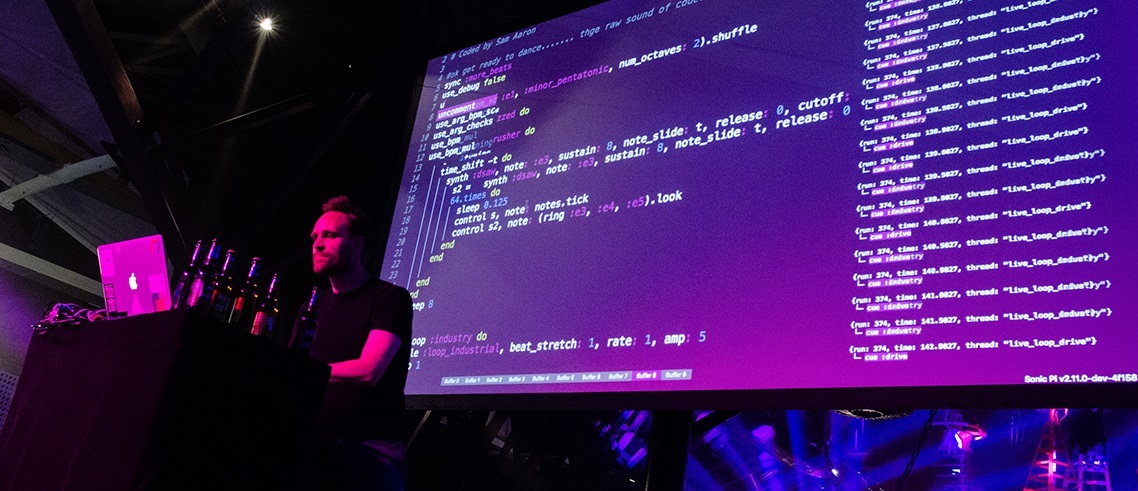
And finally. We once considered how much equipment is launched at our conference: tons! Five trucks with equipment that need to be correctly positioned and assembled drive up to the venue. They build rooms for 20 people. Usually we don’t have more than a day to do this, but there was a time when there was only one night. In which, naturally, we did not sleep. It is a pity that we will never be given an Oscar.
If you've read this far, you might want to join one of our conferences. What, to decide and choose you, all the events you will find on our website by reference .
Instead of a postscript : this post was born as a result of a fire in the area of the chair after the next question “ Why is your broadcast so expensive ?! What a pity for you, connections, it’s worth nothing , ”and I just wanted to share what a mountain of work lies behind what seemed to be ordinary video recordings and broadcasts.

However, we know and understand that there are many developers in other cities of Russia who are ready to join the community, who are looking for new technologies and approaches, but it is simply unrealistic for them to get to the capitals - for such people we make online broadcasts of our conferences.
')
What is the ideal broadcast in our opinion? Here are some links to the latest news broadcasts of the latest conferences:




And if you're wondering what it cost us to hone the broadcast and video to such a state, as well as what packs with a real-time system cause the strongest battleheart, read under the cut.
To online always online
Probably, everyone saw more than one broadcast of various conferences, seminars, schools and other things. Usually everything is simple: a video camera is taken, the speaker stands in sight, behind the back is a screen with slides from the projector. Some organizers go further and at the bottom of the broadcast window attach pdf-files of presentations - you can clarify and trace what is not visible from the screen. The more advanced ones remove the slides from the speaker’s laptop, but at the same time the picture is placed in the corner and at one point in time either the slides or the speaker are visible (you can see something like this with the Skype screen). None of these options, we, the organizers of Joker, did not suit. We do what seems logical, convenient and enjoyable to watch. And we see the general unreadiness of the industry to do what we want.
Live broadcast for us is always an interesting story. In fact, in order to simply upload a picture on the Internet, you can use YouTube - all you need is three things: a computer, an Internet channel and a connection to the camera. But to superimpose a picture with a speaker on his slides from a laptop or to show in high quality how he programs in person is not at all a trivial task. First of all, the video must be mounted, as they say, on the fly. That is, usually the installation is done: sound, video from a pair of cameras, slides to reports are assembled, and all this is slowly and carefully assembled with the help of specialized software. This is all done after recording. We need to create everything in real time. To do this, there are special programs that allow you not only to edit the video on the fly, but also, which is very important, to broadcast it in a different quality. For example, if you are watching an online broadcast from a tablet with a native resolution of 800 points, it will not pull 1920 points in width, and if you do this in a cafe with a public channel, you will not pull the Internet either. Therefore, the quality should be one. Another story, if you watch a ten-person broadcast on a 60-inch plasma. That is why the video mounted on the fly and you have to instantly cut and give in different quality. We record in the highest quality, and then pinch it on the fly - usually the delay is no more than 5-10 seconds.
Internet speed is another big pain. Alas, you won’t bring your internet with you, you have to use the one on the conference venue. And the sites are different. For example, there was a case when on the site guest access to the network was tuned to the same channel where the online broadcast took place. The people came to the conference, everyone connected to wi-fi, the speed of transmission of the broadcast dropped. Worse, we didn’t notice it right away, since the delay can be up to 15 seconds and smoothing occurs here. It also happens that the conference is held in hotels where the main hall for 600 people and small rooms for a total of 400. At the same time, the hotel offers wi-fi for 300 people. Here problems with the Internet are inevitable. Think for yourself: FullHD video eats 5 Mbit / s per room, and taking into account the technological reserve - 10-15 Mbit / s, in addition, some contractors are trying to cut the video into different quality on site, and this is 15-20 Mbit / s . Hotels have no such channels. Wireless technologies do not keep such speed, unreliable.

The server on which the video is mounted is located right on the site and it does not distribute the broadcast itself, but uploads the video to a remote server, which does this. Accordingly, when you use your server, it should be able to keep a high load, which is growing just at the moment when the video from the car on the site is poured onto the remote one. In case of a drawdown of the connection speed, you can have time to fill in the previous and next seconds of the performance. But if the Internet disappears completely, the broadcast will be interrupted.
By the way, ahead of your questions about YouTube, we used this broadcasting model. And faced with a few critical limitations. For example, the broadcast was closed in some countries - we received complaints from children from Germany (the conference was held in Moscow), saved the use of proxies through Russia. Again, broadcasting via YouTube seemed convenient - there was no need for a server, but the service does not keep an online broadcast lasting more than 8 hours, and our conference lasted a little longer. It was necessary to change the links to online at lunchtime, someone was lost, did not reload the page, sometimes they did not have time to set up all the rooms, there were delays.
Shooting rules
A very delicate moment - shooting the speaker. Especially if there are demos and live-coding in the report - we have exactly one chance to remove all the information. This is especially important if the speaker is from another city or another country - you will not ask him to repeat it again. The system that provides this shooting is quite fragile. Broadcasting is done for 20% of the conference participants, 80% are on the site itself: you need to ensure a good picture of all. It happens that during the explanation the speakers turn to the screen with the slide face, and to the hall - their backs and so continue to speak. To solve this trouble, a prompter is provided - a screen under the speaker’s feet: it’s enough for the speaker to squint down and a slide is visible.

Thus, it is necessary to provide broadcasting to the projector, broadcast, and sometimes also to the screens for the back rows and the speaker’s prompter. This circuit consistently includes many instruments, each of which can fail. Then problems will arise: the slides will disappear, the live code will disappear. And this is absolutely

It is also important to pay attention to the lighting - when video filming is one of the key points - there are no simple solutions either. First of all, you just want to highlight the speaker with a searchlight, but then the screen with slides is highlighted, and if you dim the light, the screen is perfectly visible, but the speaker is not visible. Modern technologies of television video recording are interlaced and, in case of unsuccessful lighting due to the delay between frames, the speaker moves jerky like a robot. The simplest option is to hang up additional lighting, but the lamps can blind the speaker and he will not be able to look into the hall (and in general, it is difficult to give a technical report when a pair of projectors hit your eyes). In addition, the searchlight snatches a person on the stage with a rather narrow light spot, and the speaker can walk around the stage. To control the shooting of a person in motion, you need an additional light guide who will control the direction of lighting: if you drive the camera parallel to the speaker’s movement, your eyes hurt and your head is spinning if you watch the video, if it runs smoothly, it runs away from the frame. Here the exit is technically simple, but strong-willed - to ask the speaker to move less around the stage.
Not a word past
In addition to the video you need to write more and sound. Again, this is not so easy. Sources of sound in the hall: the speaker, the tracker (presenter of the hall), the audience with questions. All these voices need to be reduced to one sound console and output to the speakers and to the broadcast. Here again can deny anything. And if in case of microphone failure in the hall, you can finish speaking with a loud voice, then the broadcast takes the sound from the console and in the event of a failure, you cannot hear anything. It so happens that the viewer asks a question without waiting for the microphone - the sound controller does not write it. But some questions are very valuable and precisely complement the report, help clarify the topic or the details that the rapporteur omitted for some reason. We are sending a sound cannon (a remote microphone) to such a voice - and that voice already hits the sound console, from where it is being broadcast.
 Even elementary batteries are important! You will laugh, but in our check-list it is written who, when buying them, changes and checks that the sound is guaranteed to come from the microphones. Well, for security, each speaker has a digital voice recorder that is not tied to the console. Thanks to him, in the event of a total microphone mute, there will always be an audio track that falls into the final assembly of the conference materials.
Even elementary batteries are important! You will laugh, but in our check-list it is written who, when buying them, changes and checks that the sound is guaranteed to come from the microphones. Well, for security, each speaker has a digital voice recorder that is not tied to the console. Thanks to him, in the event of a total microphone mute, there will always be an audio track that falls into the final assembly of the conference materials.Another difficulty is the tight deadlines for the conference. In 2016, Joker will be held for two busy, dense days. During this time, we need to give maximum information, and we compress all that can be compressed: for example, the intervals between reports. Which, by the way, can be captured by questions to the next expert. It happens that the break is reduced to three minutes, but for us this is the moment of equipment reconfiguration: you need to connect the following laptop (everyone has different PCs with different operating systems: macOS, Windows, Linux, which work differently with the video output), a microphone. Any delay cascading entails delays and other activities, so we can configure and in three minutes. We established the friendship of laptops with equipment at the site as follows: the speaker sees a bunch of different types of cables (HDMI, VGA, Displayport and God knows what) connects one that supports his device, and then a special device converts the image.
The complexity of the settings associated with the multiplicity of the conference. One set of equipment should be able to fantastically a lot, work on the hall and on the broadcast. This is a very complex overall picture. But our system is debugged and works on the fly. If we expect some kind of a jamb or a failure, then by all means we lay a straw. Of course, if the Internet cable cuts through the excavator on the street or in the whole area, the electricity is cut, it is already difficult to do something. As for the rest, we have already tested the broadcast of this year in different qualities, everything works.
And then what?
Sometimes it seems that the ideal has almost been reached: here is our FullHD broadcast almost without delay and artifacts with sound pouring out of hundreds of monitors - there is a great temptation to exclaim in Faust, “Stop, instant.” But this is a road to nowhere, so in October at Joker 2016 we are preparing several features that will make the broadcast more interactive:
Chat in all tracks
Previously, we used Twitter to catch bugs and glitches - this allowed us to correct mistakes in up to 3-5 minutes, this time there will be a chat in each track, where participants can not only write about errors, but also discuss reports. As long as there is a nuance - asking the speaker in real time will not work yet, the speaker will see all the comments only after his speech - however, here we come to the next thing, which will allow you to get the necessary answers.
Interviews with speakers
According to the results of the report and discussion in the discussion area, the speaker will give interviews during the conference breaks - this means that we will almost completely say goodbye to “Wait, Now Begin” plugs and the audience will have non-stop broadcasting.
In fact, this is such an exclusive for those who follow the broadcast, because these interviews are not seen at the conference. In addition, the speaker will be able to answer questions that you ask in the chat, and if you ignite the holivar and the enthusiasm of the speaker, then you can see the announcements of Habropost.
Interviews with partners and sponsors
In addition to the speakers, in the breaks of the interview partners and sponsors of the conference will give. Why is this necessary? Often, sponsors do not just promote their companies (after all, this is not very interesting), but prepare various interactive interviews - “quick-thinking” tasks, share interesting case studies and live hacks, and also tell insider information about the most interesting projects that are being prepared in the depths of their offices.
For example, EPAM encourages computer science and research, and did Deutsche Bank send employees to London last year? This can only be heard firsthand, now in our online broadcast!
Party broadcast
And “for dessert”: broadcast of the first day's party, with a break during which you can have time to

And finally. We once considered how much equipment is launched at our conference: tons! Five trucks with equipment that need to be correctly positioned and assembled drive up to the venue. They build rooms for 20 people. Usually we don’t have more than a day to do this, but there was a time when there was only one night. In which, naturally, we did not sleep. It is a pity that we will never be given an Oscar.
If you've read this far, you might want to join one of our conferences. What, to decide and choose you, all the events you will find on our website by reference .
Instead of a postscript : this post was born as a result of a fire in the area of the chair after the next question “ Why is your broadcast so expensive ?! What a pity for you, connections, it’s worth nothing , ”and I just wanted to share what a mountain of work lies behind what seemed to be ordinary video recordings and broadcasts.
Source: https://habr.com/ru/post/309614/
All Articles